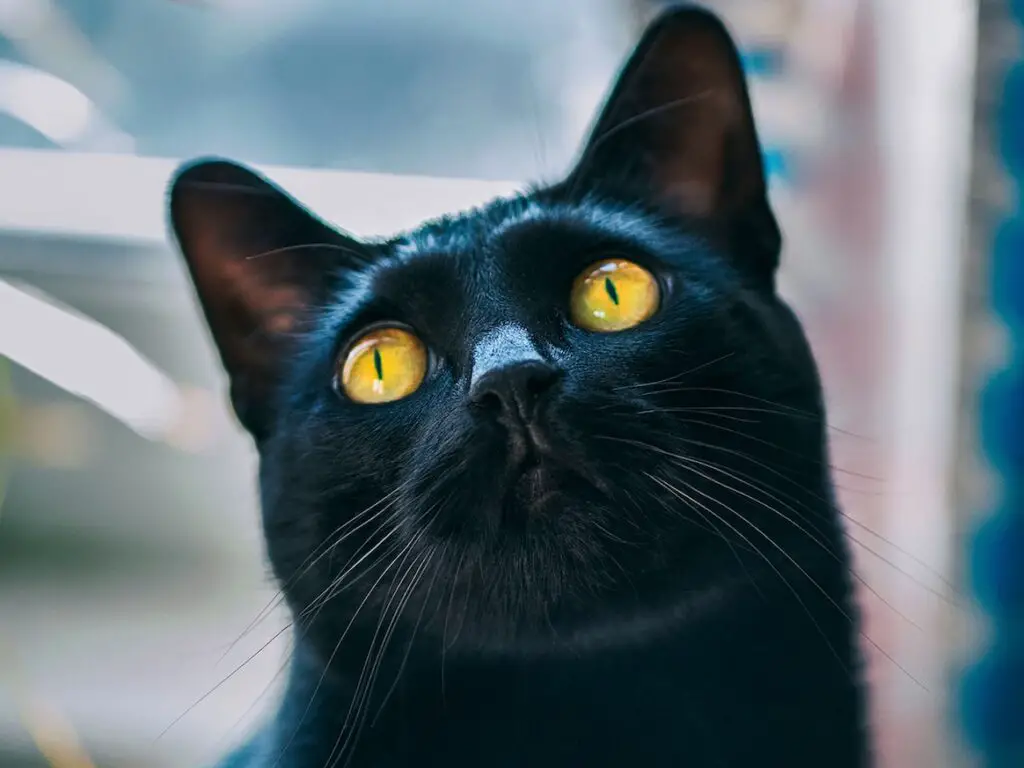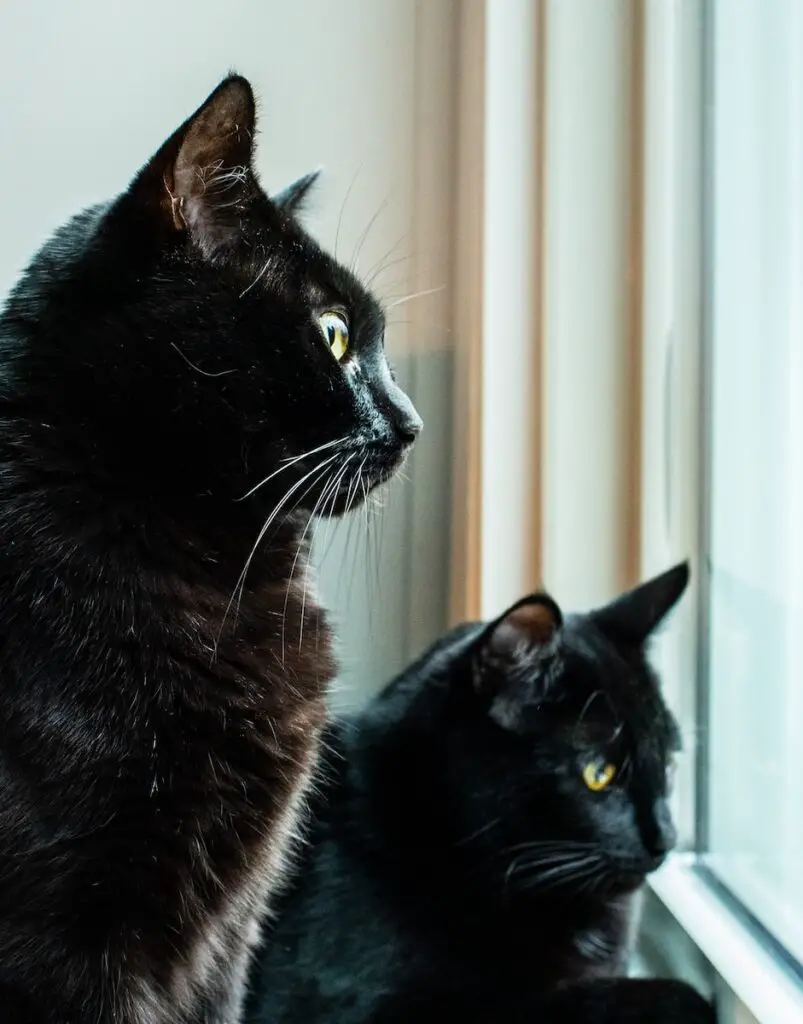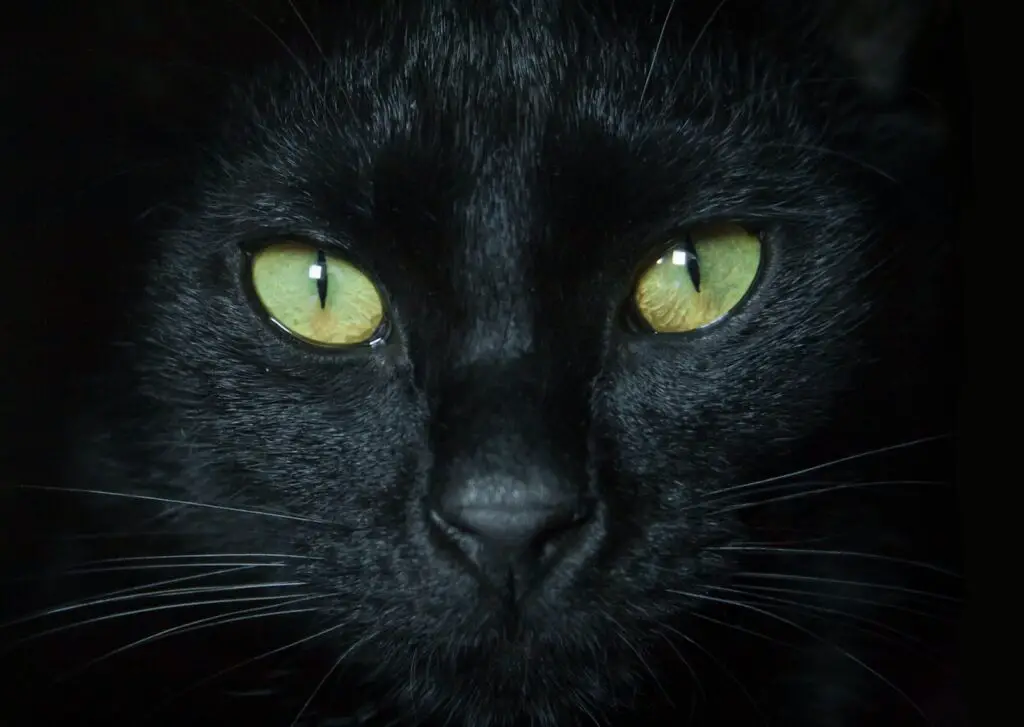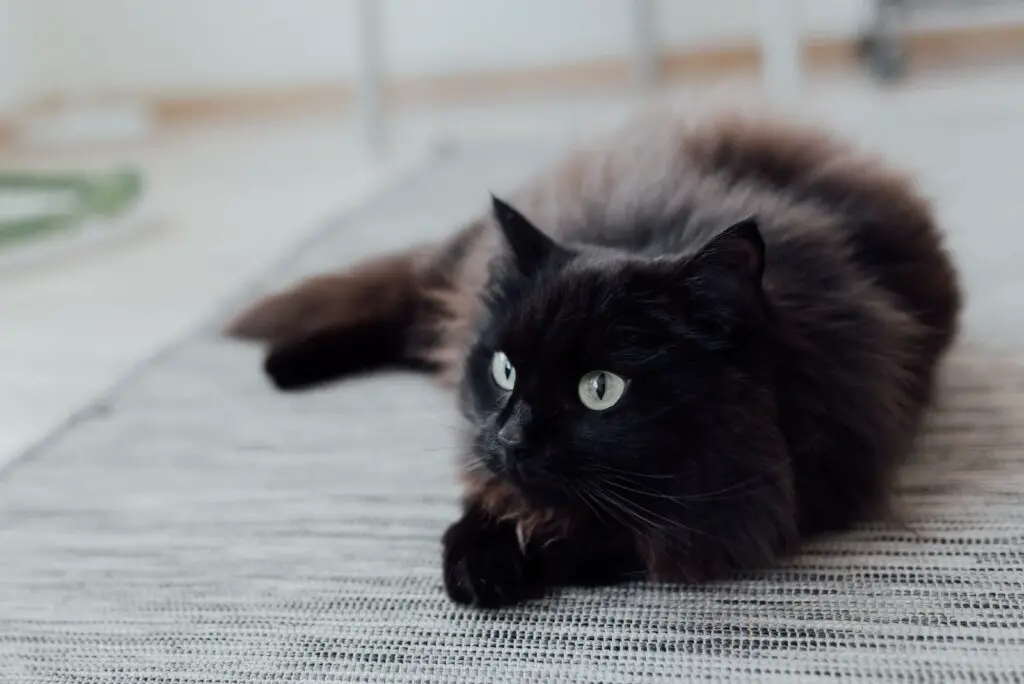
If you own a black cat, chances are they’ve had to deal with the dreaded flea problem.
Fleas can cause itching and irritation for your pet, as well as spread disease through their bites.
In this article, we’ll discuss how to identify fleas on your black cat, what treatments are available, and tips to prevent future infestations.
So let’s dive in and learn how to battle those bugs so that both you and your furry friend can live happily ever after!
Signs Of A Flea Infestation
Flea eggs are one of the earliest signs of a flea infestation: they’re tiny, white, and often found in your cat’s fur.
Flea dirt, which looks like black specks, is another sign you may notice; it’s actually flea feces, which contains digested blood.
Lastly, bite marks on your cat’s skin can be a tell-tale sign of fleas; they’re usually small and red, and may be accompanied by itching or irritation.
Flea Eggs
In addition to adult fleas, you may also discover flea eggs when checking your black cat for signs of a flea infestation.
Flea eggs are white and about the size of a grain of sand.
They look like dandruff flakes but don’t brush off as easily.
To tell if your black cat has fleas, check them carefully for these tiny egg-like particles in their fur or on their bedding.
If they have an active flea problem, there will be many visible flea eggs that can be seen with the naked eye.
Pay special attention to the nape of their neck where most adults tend to concentrate; it’s another sure sign your pet is dealing with an infestation.
Flea Dirt
Once you’ve located flea eggs, another important sign of a flea infestation on your black cat is ‘flea dirt’, which are actually the droppings from adult fleas.
It’s easy to spot since it looks like little specks of ground pepper scattered throughout the fur or bedding.
To tell if it’s really flea dirt, use a damp paper towel and wipe away at the tiny specks; they should stick to the towel and turn reddish-brown in color due to their high iron content.
If this is what you see while checking for signs of fleas on your black cat, then chances are there’s an active infestation that needs to be addressed right away.
Bite Marks
Once you’ve identified flea dirt and eggs, another sign of a flea infestation on your black cat is bite marks.
Fleas will often latch onto the skin of cats to feed, leaving behind tiny red dots or raised bumps.
If you see this while checking for signs of fleas on your black cat, then it’s likely that they do have fleas and you should take action right away.
Do not wait as these parasites can easily spread from one animal to another, so it’s important to address any potential issue with fleas on black cats immediately.

Understanding The Life Cycle Of Fleas
Now that you know the signs of a flea infestation, it’s time to understand more about the life cycle of these pests. Black cat fleas are blood-sucking parasites that feed on cats and other animals. They reproduce quickly and can live for several months. In order to effectively identify and eradicate them from your black cat, it’s important to learn how they develop over time.
Black fleas on cats go through four distinct stages in their life cycle: egg, larva, pupae, and adult. The female black cat flea will lay eggs after taking a blood meal. These eggs then hatch into larvae within two days and begin feeding off skin particles or feces left by adult fleas in carpets or pet bedding.
After seven days of development, the larvae spin cocoons called pupae where they undergo metamorphosis until the adults emerge as fully grown fleas ready to feed on their host. Understanding how long each stage lasts helps pinpoint when an infestation has started so you can take action immediately with proper treatment plans for your black cat.
Additionally, knowing what materials around your home provide suitable breeding grounds is key in preventing future infestations from occurring again. With this knowledge in hand, you’ll be prepared to treat your cat for fleas and protect him from pesky bite marks caused by these tiny bugs!
Treating Your Cat For Fleas
Treating your cat for fleas is an important step in eradicating them from your home. The first thing you need to do is take your cat to the vet and get a prescription for anti-flea medication.
This will usually come in the form of a topical cream that you apply directly on the back of their neck every few weeks, or it can be given orally as well. It’s important to follow instructions carefully when using these medications, so make sure you read all labels thoroughly before applying anything to your pet.
You should also use special anti-flea shampoo during baths, which helps rid any lingering fleas from your cat’s fur. Make sure not to miss any spots while lathering up!
Additionally, if you have other pets at home, they will also need treatment as soon as possible – even if they don’t show signs yet – since fleas tend to spread quickly between animals.
Once all treatments are administered, monitor your cat closely over the next few days. Pay attention to their behavior and keep an eye out for any remaining fleas or eggs on their fur.
If necessary, consult with your veterinarian again and look into additional preventative measures such as flea collars or essential oil sprays. Moving forward then requires cleaning up your home environment; vacuuming carpets regularly and washing bedding in hot water will help eliminate much of the infestation in its tracks.

Cleaning Your Home And Environment
Now that you have identified the fleas on your black cat, it is time to clean and treat your home environment for any other existing parasites.
Start by vacuuming thoroughly, paying special attention to furniture, carpets, and upholstery where flea eggs may be hiding. Pay particular attention to areas around baseboards and behind doors as these can also be hot spots for infestations.
After vacuuming, use a steam cleaner to sanitize all surfaces in the house including floors, walls, and window frames. This will help kill any remaining fleas and their larvae lurking in various crevices of your home.
The last step is to apply an insecticide spray treatment throughout the entire space; this should be done outdoors or in well-ventilated spaces with everyone wearing protective masks since inhaling such chemicals can be dangerous.
With diligent cleaning efforts, you are now one step closer to eradicating those pesky parasites from your beloved pet’s fur!
The next step involves taking proactive measures to prevent fleas from returning in the future.

Preventing Fleas In The Future
Fleas can be a pesky problem, but with the right preventative steps in place, you can keep your black cat safe and flea-free.
It’s important to invest in regular treatments that will break the life cycle of these pests and protect your pet from further infestation. There are several options available when it comes to flea prevention; topical medications, collars, and oral pills all provide effective protection against fleas. Make sure to speak with your vet before using any treatment on your black cat to make sure it is appropriate for their age and health conditions.
Grooming your cat regularly is also an important part of keeping them free from unwanted parasites. Brushing or combing through their fur often helps remove dead skin cells and other debris that may attract fleas. Regular baths help too – use lukewarm water mixed with mild shampoo specifically designed for cats, as human shampoos can be irritating for pets’ skin!
Finally, try vacuuming around the house at least once a week – this will get rid of eggs and larvae lurking within furniture fabrics or carpets that could lead to another infestation down the line.
Taking simple precautions like these should ensure your four-legged family member remains happy and healthy while avoiding any future run-ins with those pesky critters!
Conclusion
Fleas can be a nuisance, especially for cats. It’s important to take the proper precautions and treatments when dealing with flea infestations in order to keep your furry friend safe and healthy.
With an understanding of their life cycle and how to treat them, it’s possible to eliminate these pesky bugs from both your cat and home environment.
Regularly treating your cat with anti-flea products is key in preventing future infestations; this will help ensure that you and your pet are free of troublesome pests!
Lee Harris
Latest posts by Lee Harris (see all)
- Homemade Cat Cookies: A Purr-fect Treat for Any Occasion - February 7, 2024
- Chic Feline Elegance: Crafting a Multi-Tiered Black Cat Cake - February 6, 2024
- Purr-fectly Delicious: Black Cat-Themed Donut Delight - February 5, 2024


